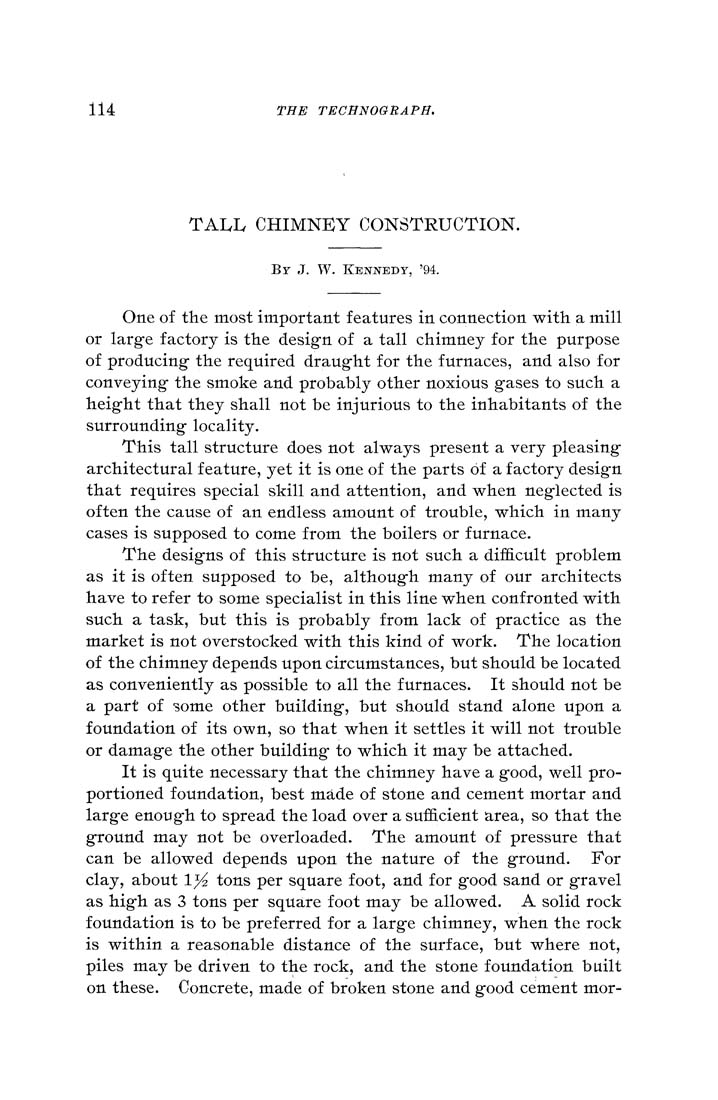114 THE TECHNOGRAPH,
TALL CHIMNEY CONSTRUCTION.
Br J. W. Kei^nedy, '94.
One of the most important features in connection with a mill
or large factory is the design of a tall chimney for the purpose
of producing the required draught for the furnaces, and also for
conveying the smoke and probably other noxious gases to such a
height that they shall not be injurious to the inhabitants of the
surrounding locality.
This tall structure does not always present a very pleasing
architectural feature, yet it is one of the parts of a factory design
that requires special skill and attention, and when neglected is
often the cause of an endless amount of trouble, which in many
cases is supposed to come from the boilers or furnace.
The designs of this structure is not such a difficult problem
as it is often supposed to be, although many of our architects
have to refer to some specialist in this line when confronted with
such a task, but this is probably from lack of practice as the
market is not overstocked with this kind of work. The location
of the chimney depends upon circumstances, but should be located
as conveniently as possible to all the furnaces. It should not be
a part of some other building, but should stand alone upon a
foundation of its own, so that when it settles it will not trouble
or damage the other building to which it may be attached.
It is quite necessary that the chimney have a good, well pro¬
portioned foundation, best made of stone and cement mortar and
large enough to spread the load over a sufficient area, so that the
ground may not be overloaded. The amount of pressure that
can be allowed depends upon the nature of the ground. For
clay, about 1}^ tons per square foot, and for good sand or gravel
as high as 3 tons per square foot may be allowed. A solid rock
foundation is to be preferred for a large chimney, when the rock
is within a reasonable distance of the surface, but where not,
piles may be driven to the rock, and the stone foundation built
on these. Concrete, made of broken stone and good cement mor-
|








